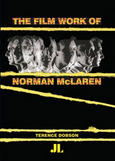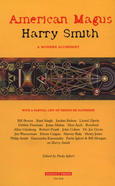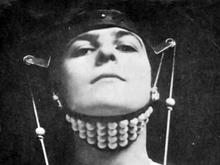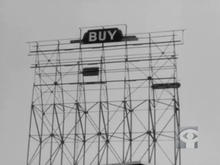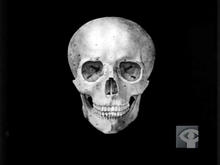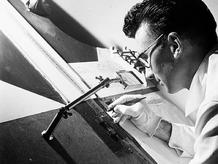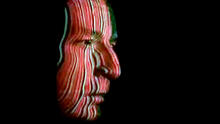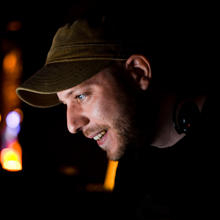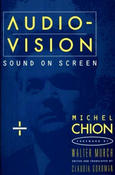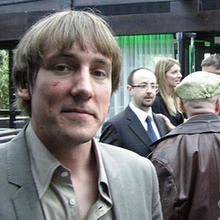Arthur Lipsett
(1936-1986) was a Canadian avant-garde director of short collage films. Lipsett's meticulous editing and combination of audio and visual montage was both groundbreaking and influential.
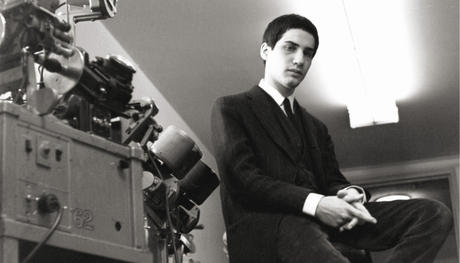
Arthur Lipsett’s charismatic presence and tough avant-garde films lit up Canadian and international festivals in the 1960s. His perfectly judged film cuts, masterful control of sound collage and acerbic wit brought him worldwide interest when his first NFB film, Very Nice, Very Nice (1961), was nominated for an Academy Award for Best Live Action Short.
Lipsett was born in Montreal in 1936 to a Jewish family. When he was 10, Lipsett witnessed his mother, an immigrant from Kiev, take her own life. Lipsett’s work, which focuses on the indifference of humanity to the difficulties of the world, surely was affected by his tragic upbringing. His father, a cold man and a chemist, remarried without consulting his children, Arthur and Marian.
Despite these problems, Arthur Lipsett proved to be an excellent student at the Montreal Museum of Fine Art, where his mentor was the painter Arthur Lismer. A member of the acclaimed Group of Seven, Lismer recommended Lipsett to the NFB. Among the people who showed an interest in Lipsett at that time was Norman McLaren.
In 1958, Lipsett joined the animation unit as an editor. His friends and colleagues included such gifted young artists as Gerald Potterton, Derek Lamb and Kaj Pindal. They all participated in Hors d’oeuvres, a series of short pieces produced for CBC and Radio Canada in 1960. Lipsett spent time with Evelyn Lambart and Norman McLaren during the next two years, most notably on the trickily edited Opening Speech (1961).
In 1961, Lipsett was encouraged to put visuals to a sound collage he had edited together from outtakes discarded by other NFB filmmakers. Using a similar method with film footage, but augmenting it with some of his own shots, Lipsett married the sounds and images together. The result was Very Nice, Very Nice and his sudden rise to prominence at the Board.
Over the next nine years, Lipsett used his brilliant montage methods to create a unique body of work at the NFB. The films, acclaimed by some and attacked by others, were controversial, since Lipsett used his skills to attack what he perceived to be the massive commercialism and hypocrisy of Western society. It’s acknowledged that his greatest successes were the early films, Very Nice, Very Nice; 21-87 (1963), Free Fall (1964) and A Trip Down Memory Lane (1965). After a hiatus, his final collage piece, Fluxes, (1968) was less remarkable: it feels more like marking, rather than sculpting, time. With N-Zone (1970), Lipsett tried something different, including footage of family and friends as counterpoints to his 'objective' montage sequences. The film was attacked and Lipsett left the Board.
The final years of Lipsett’s life move inexorably towards a tragic denouement. His attempts to relocate in Toronto proved unsuccessful and Lipsett’s long-time companion, Judith Sandiford, left him. Drug use exacerbated his fragile psychological state, forcing Lipsett to spend periods of time in psychiatric institutions and hospitals. Finally, in early 1986, just before his 50th birthday, Lipsett committed suicide. Canada’s first experimental filmmaker, an inspiration to Stanley Kubrick, George Lucas, Guy Maddin and many others, was no more—but his legacy as an artist continues.
Source: National Film Board of Canada
Lipsett was working at a time when independent avant-garde filmmaking did not exist in Canada, with a few isolated exceptions (Jack Chambers in London, Ontario; David Rimmer and Al Razutis in Vancouver; Wieland and Michael Snow, who jointly relocated to New York in 1963). In the absence of independent distribution and funding mechanisms before the late ’60s, many innovative young cineastes ended up at the NFB where salaries, equipment, budgets and some degree of creative freedom could be quickly obtained. Pierre Hébert, Derek May, Gilles Groulx, Claude Jutra, Michel Brault, Roman Kroitor, Wolf Koenig, Ryan Larkin and Lipsett were just some of the talented filmmakers to emerge at the Board in the late-’50s and early-’60s. In the experimental field, Hébert, working alongside Norman McLaren, was a pioneer of hand-scratched films and computer-generated animation. Larkin, the 'Frank Zappa of animated film', gracefully combined charcoal line drawings with colour washes and other media. In documentary, Groulx, Jutra and Brault initiated the Québécoise direct cinema movement and Kroitor and Koenig its English-Canadian equivalent, while May’s documentaries anticipated the first-person diary strain that arose later in the decade.
However these examples also call into question the very notion of 'independent film'. Norman McLaren developed and refined numerous direct film techniques at the NFB (many of which were gleaned from Len Lye during their days together at the British GPO Film Unit), but he also had his own animation department and technical staff. Furthermore, Norman McLaren’s whimsical, populist animated films are arguably far from 'avant-garde'. Which raises the larger question: Can government-sponsored art/work really be considered independent or socially critical?
Source: Senses of Cinema
